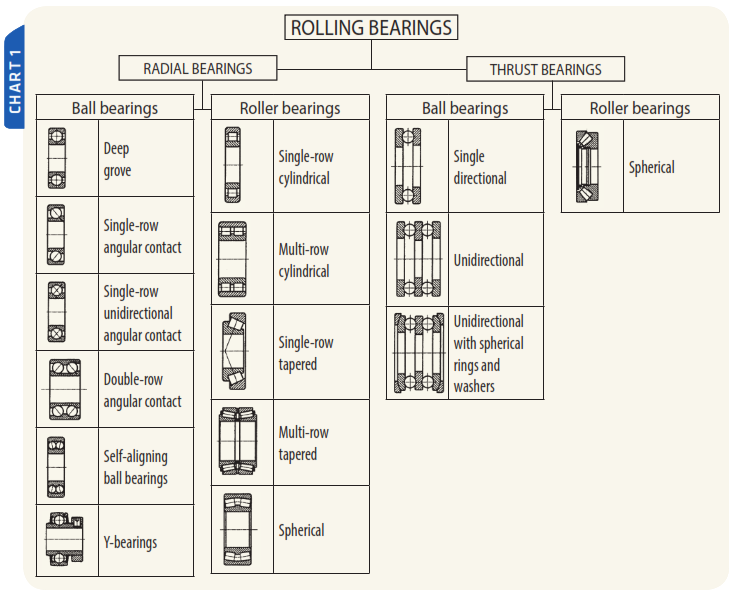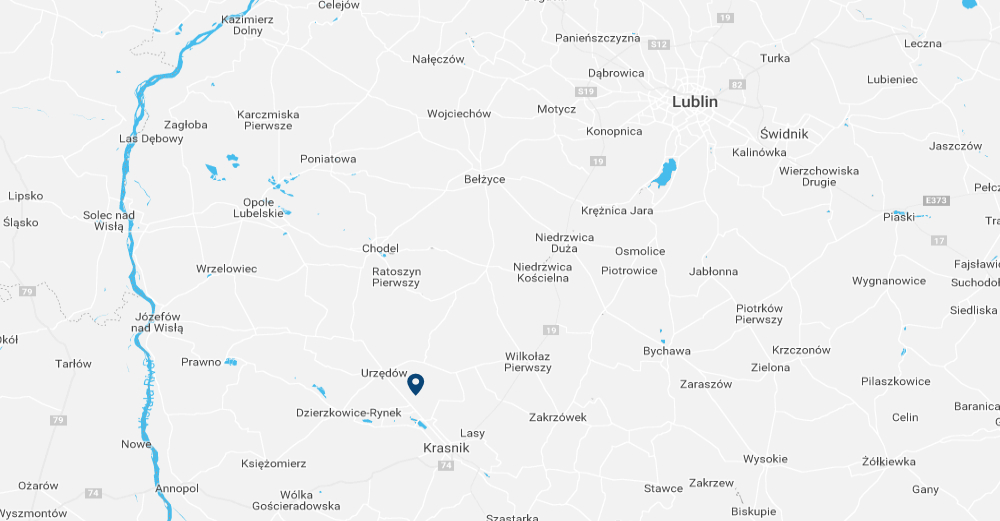Bearings types
Thank to providing minimum amount of friction between moving mechanisms rolling bearings have been incorporated almost in all branches of industry.
Diversity of design solutions and working conditions along with consequent requirements caused many different designs of rolling bearings to arise.
Two major groups of rolling bearings can be distinguished:
- radial bearings,
- thrust bearings.
This division results from the direction in which the bearing has load carrying capability. In fact, the majority type of bearings can carry both type of loads – that is why the division on radial and thrust bearings is dependant on the theoretical angle of action α, as follows:
0° ≤ α ≤ 45° – radial bearings,
45° < α ≤ 90° – thrust bearings.

Bearings designations
Each bearing is marked with alphanumeric symbol, which describes design features, size and special characteristics e.g. cage type, accuracy class, clearance etc. In general, there are three groups of characters in bearing designation mark:
- group of characters before the base number,
- base number,
- group of characters after the base number.
The most common designations are described bellow.
Characters placed before base number

Characters of base number


Characters placed after base number
There can be distinguished the following groups of additional markings symbols, placed after the base number:













